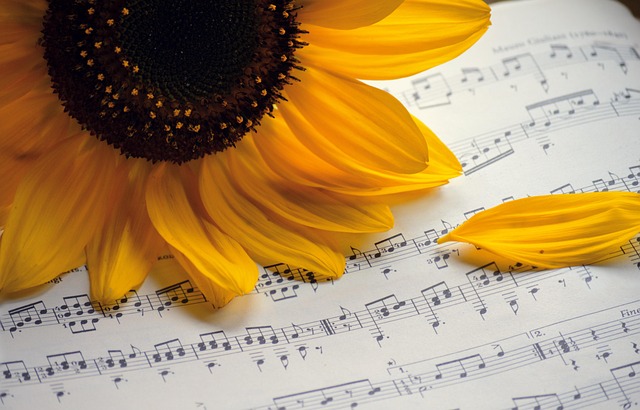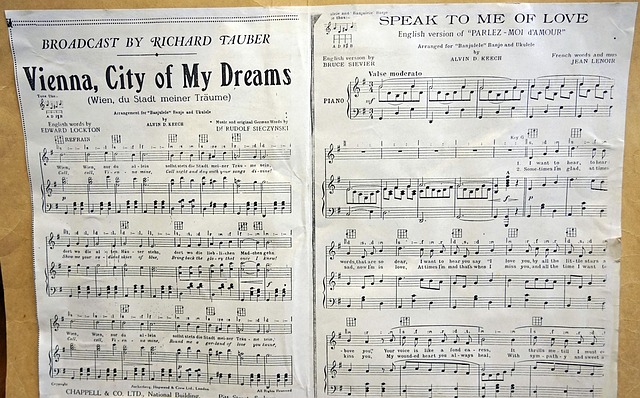Creating a compelling song involves balancing structure, narrative, harmony, dissonance, and emotional arcs. Understanding diverse music genres and exploring intricate patterns deepens appreciation. Well-crafted bridges, transitions, and memorable conclusions elevate the impact of songs, engaging listeners in a rich tapestry of sound and emotion.
Unleash your inner composer with our guide on best practices for song structure. Learn how to craft a captivating tune that resonates with listeners from start to finish. We’ll explore essential elements like establishing a clear framework, building verses and choruses that engage, crafting compelling bridges, and concluding with impact. Discover tips and tricks to elevate your songs and connect with your audience in meaningful ways.
- Establish a Clear Song Framework
- Build Effective Verses and Choruses
- Craft Compelling Bridges and Transitions
- Conclude with Impact and Memory
Establish a Clear Song Framework

Creating a well-structured song is an art that combines creativity with a solid understanding of musical principles. Before diving into composition, establishing a clear framework for your song is essential to ensure its impact and appeal. This involves defining the overall structure, identifying key sections, and planning the progression of ideas. A traditional verse-chorus format, for instance, has proven effective in countless hits across various genres, but it’s just one of many options to explore.
In music history timeline for beginners, you’ll discover that different eras embraced structured compositions like classical forms while others celebrated improvisational jazz, showcasing the dynamic nature of song structure. Even when opting for unconventional instruments and their unique sounds, understanding basic frameworks can help guide your creative process. As you build your musical tapestry, remember that a strong framework acts as the backbone, allowing your ideas to flow harmoniously, much like rhythmic patterns and their impact on our senses. Find us at rhythmicpatternsandtheirimpact for more insights into enhancing your song structures.
Build Effective Verses and Choruses

Building effective verses and choruses is a cornerstone of crafting a compelling song. Verses, with their narrative or descriptive nature, should tell a story or convey an idea, using language that resonates with listeners. The chorus, on the other hand, is where the core message or hook of the song lives. It’s essential to create choruses that are memorable and easily sing-alongable, often employing simple yet impactful lyrics. Balancing this with varied verse structures can add depth and interest, keeping the listener engaged throughout the song.
In terms of harmony and dissonance in music, understanding these elements can enhance your structure. Harmony adds cohesion while dissonance creates tension and drama. In classical vs. modern music genres, both approaches are used but with varying degrees of emphasis. For instance, classical compositions often rely heavily on harmony for their structural integrity, whereas modern music may leverage dissonances to create a more experimental feel. As you develop your verses and choruses, consider how these musical elements can work together to elevate the overall impact of your song, especially when exploring digital music distribution and streaming platforms that offer endless opportunities for discovery. Give us a call at [your brand/service] to introduce instruments and their roles in crafting these essential sections.
Craft Compelling Bridges and Transitions

Crafting compelling bridges and transitions is an art that can elevate your song from good to great. Bridges serve as pivotal moments in a song’s structure, providing a contrast to the primary verse and chorus while guiding the listener on a musical journey. Experiment with different musical scale types and modes to create unique harmonic movements that capture attention. Transitions, on the other hand, are the threads that weave these sections together seamlessly. They can be as simple as a change in tempo or as intricate as a complex chord progression. When planning your song structure, consider how these elements can create tension and release, building anticipation for what’s to come.
In today’s digital music distribution and streaming landscape, understanding dynamics like these is crucial for engaging listeners. Music appreciation deepens when we recognize how artistic expression through music therapy – yes, that’s right, music therapy – can evoke emotions and tell stories within the context of a song’s structure. Whether you’re using rest periods to create suspense or adding unexpected musical flourishes, always keep your audience in mind.
Conclude with Impact and Memory

A well-structured song doesn’t merely tell a story; it invites listeners on a historical journey through music genres, each with its unique characteristics and evolution. From the improvisational jazz that swirls with spontaneous melodies to the structured compositions of classical periods, understanding these diverse forms enhances our appreciation for musical art. This is especially true when delving into the intricate patterns of musical scale types and modes, which have woven their way through centuries of human expression.
Concluding a song with impact and memory in mind can significantly elevate its overall effect. Whether it’s a haunting refrain that lingers in the mind or a climactic crescendo that stirs the soul, these final moments leave a lasting impression. At appreciating classical music’s complexity, we encourage you to explore the intricate structures that underpin various genres, allowing you to fully immerse yourself in the rich tapestry of sound and emotion that each song offers.
Crafting a compelling song involves structuring it thoughtfully. By establishing a clear framework, building effective verses and choruses, crafting compelling bridges and transitions, and concluding with impact, you can create a memorable tune that resonates with listeners. These best practices ensure your song not only flows smoothly but also leaves a lasting impression.








Leave a Reply